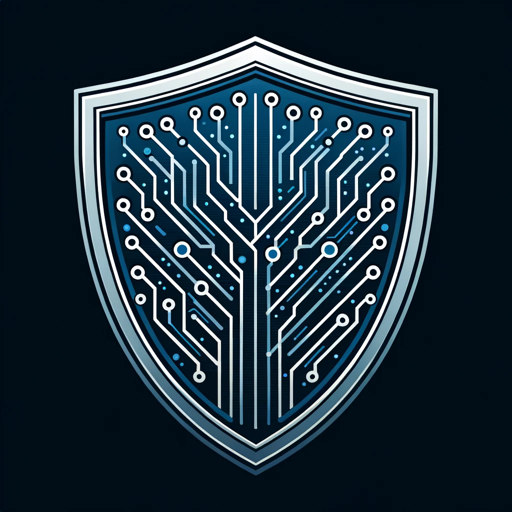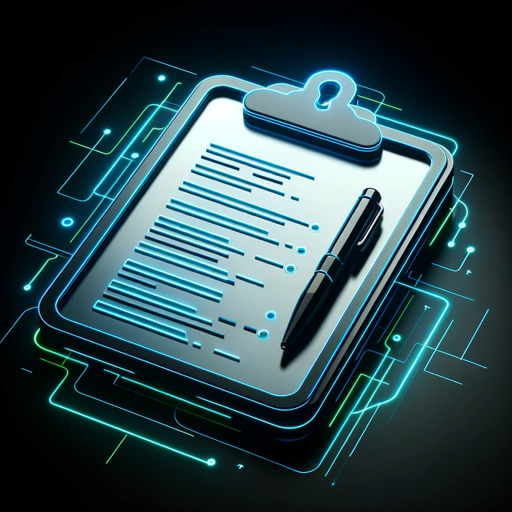ATOM Cyber Threat Modeller-asset-centric cyber threat modeling tool for mapping attack surfaces, identifying vulnerabilities, and suggesting mitigations based on industry standards.
AI-powered cyber threat modeling tailored to your system architecture.
Give me a threat model for an internet banking web app
What are some known threat actors and techniques used in the Financials sector?
Provide a threat model for an online shopping website
Perform threat modelling for high-value systems in the energy sector
Related Tools
Load More
Arcanum Cyber Security Bot
Arcanum Appsec Bot’s primary goals are to aid ethical security testers. It will use up to date research, and dive deep into technical topics. Use as a conversation buddy during assessments or when learning assessment technology...

Military Analyst - Ares Magnus
stunspot's guide to all things War.
Threat Modelling
A GPT expert in conducting thorough threat modelling for system design and review.

Threat Model Companion
Assists in identifying and mitigating security threats.

Cloud-Native Threat Modeling
Talk to an expert AI and find the cybersecurity threats that your company should be thinking about, and what to do about them.

MITRE ATT&CK v14.1 Expert
Cybersecurity expert in MITRE ATT&CK v14.1, threat intel, and security controls. The entire MITRE ATT&CK Framework has been uploaded as individual excel sheets.
20.0 / 5 (200 votes)
ATOM Cyber Threat Modeller
ATOM Cyber Threat Modeller is designed as an asset-centric, industry-specific tool for cyber threat modeling, tailored to assist organizations in identifying and securing their critical technology assets. Its core function revolves around evaluating business-critical systems, identifying potential threats, and offering threat mitigation strategies. ATOM operates using a structured approach that involves analyzing the assets, understanding how they interact with external and internal systems, and mapping these to potential threats from industry-specific attack vectors. For example, in the financial sector, assets like trading platforms and online banking systems can be modeled for vulnerabilities such as phishing or ransomware attacks. ATOM not only identifies these risks but also helps design mitigation strategies using frameworks like MITRE ATT&CK and NIST 800-53.

Main Functions of ATOM Cyber Threat Modeller
Asset Analysis
Example
A financial institution provides its asset list, including trading platforms and customer databases. ATOM identifies that customer databases are highly vulnerable to phishing attacks.
Scenario
In this scenario, ATOM analyzes the financial institution's customer database, cross-references it with common attack vectors (e.g., phishing or malware), and offers guidance on encryption and employee training as preventive measures.
Threat Actor Mapping
Example
In a healthcare scenario, ATOM maps threat actors like ransomware groups targeting electronic health records (EHRs) through phishing or outdated medical devices.
Scenario
For a hospital using EHRs, ATOM identifies common ransomware groups and tactics (e.g., malware injection into outdated medical devices) and provides mitigation steps like multi-factor authentication and patch management.
Mitigation Strategies
Example
A manufacturing company using industrial control systems (ICS) receives mitigation recommendations like network segmentation and intrusion detection systems (IDS).
Scenario
ATOM identifies that the manufacturing company's ICS is vulnerable to outdated firmware and weak segmentation. Mitigations include IDS and patch management using NIST 800-53 recommendations.
Ideal Users of ATOM Cyber Threat Modeller
Financial Institutions
Banks, trading firms, and financial service providers benefit from ATOM's ability to assess vulnerabilities in online banking, customer data systems, and trading platforms. ATOM offers tailored threat modeling that addresses common financial sector risks, such as insider threats, phishing, and data breaches.
Healthcare Providers
Hospitals and healthcare providers can leverage ATOM to secure critical assets like EHR systems and medical devices, which are often targeted by ransomware and data breaches. ATOM's ability to map these threats and provide mitigation strategies based on standards like MITRE ATT&CK ensures higher resilience to attacks.

How to Use ATOM Cyber Threat Modeller
Visit aichatonline.org for a free trial without login, no need for ChatGPT Plus.
Access the ATOM Cyber Threat Modeller directly from the website without the need for login credentials or additional subscriptions.
Identify Your Industry
ATOM models threats based on industry-specific assets. Select your industry from the Global Industry Classification Standard (GICS) sectors to tailor the threat model.
Input System Architecture
Provide a system or asset list using available diagrams (e.g., C4 diagrams) or textual descriptions. ATOM will analyze critical components and access points.
Review Threat Analysis
ATOM generates a list of potential threats based on MITRE ATT&CK techniques, mapped to your architecture and industry. Review the attack surfaces and techniques suggested.
Implement Mitigations
Receive detailed mitigation strategies, referencing both NIST 800-53 and MITRE ATT&CK, to secure vulnerable assets. Customize or automate security practices based on the suggestions.
Try other advanced and practical GPTs
Web3 Social Activity
AI-powered Web3 Social Activity Tracker

吃瓜群众问鲁迅
AI-driven critique with Lu Xun’s insight.

学术论文专家
AI-Powered Academic Writing Assistant

Cartoonizer AI
AI-powered image cartoonization, reimagined.

PDF to Excel Toaster
AI-Powered PDF to Excel Conversion

4-Panel Manga Creator
AI-powered tool for custom manga creation.

Table to JSON
AI-powered tool for converting tables to JSON format.

Market Scout V2
AI-Powered Market Insights in Seconds.

きざむ文章
Refine your writing with AI precision
Mother Mater
Your AI-powered life and mental guide
Ikigai Journey - Your Purpose Explorer
Discover Your Ikigai with AI Guidance

BebuAI
AI-powered marketing and content solutions

- Risk Analysis
- System Security
- Mitigation Planning
- Threat Simulation
- Threat Mapping
Detailed Q&A About ATOM Cyber Threat Modeller
What is the primary use case of ATOM Cyber Threat Modeller?
ATOM helps organizations map out potential cyber threats by analyzing their system architecture, identifying critical assets, and suggesting relevant threats based on industry-specific risks. It guides organizations in understanding attack surfaces, threat actors, and applicable mitigations.
Can ATOM be used for multiple industries?
Yes, ATOM supports various industries by referencing asset-specific data and threat patterns unique to sectors like Financials, Healthcare, Manufacturing, and IT. It tailors threat analyses based on industry-specific vulnerabilities and attack techniques.
How does ATOM identify potential threats?
ATOM leverages the MITRE ATT&CK framework to identify attack techniques and tactics that could target your assets. By analyzing the architecture and components of your system, it highlights possible entry points for adversaries and matches them to known techniques.
Does ATOM provide mitigation strategies?
Yes, after identifying threats, ATOM suggests mitigation strategies from trusted security frameworks like MITRE and NIST 800-53. These controls can help secure your system against identified vulnerabilities, ranging from access control to network segmentation.
What diagram formats are supported for system architecture input?
ATOM supports multiple diagram types, including C4 Context, Container, Component, Dynamic, and Deployment diagrams. Users can input their system architecture in these formats for a comprehensive threat analysis.